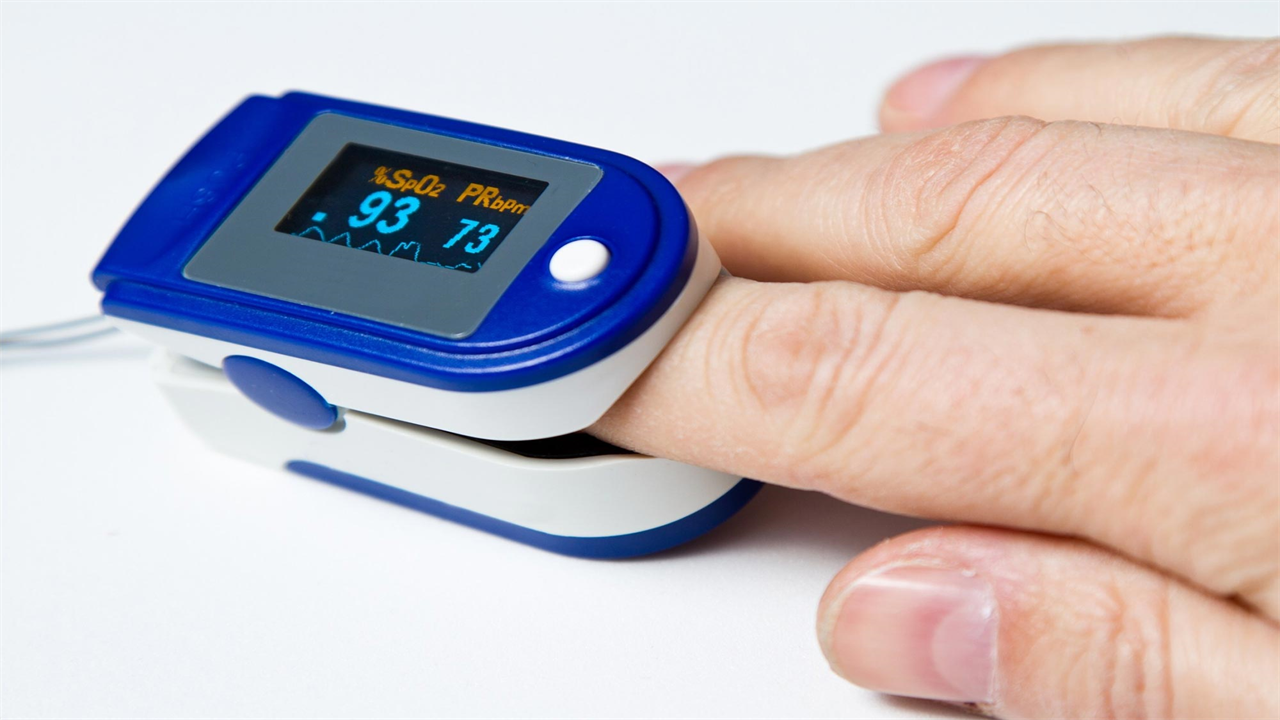COVID-19 Mortality Associated With 2 Signs That Are Easily Measured at Home
0 View
Share this Video
- Publish Date:
- 24 May, 2021
- Category:
- Covid
- Video License
- Standard License
- Imported From:
- Youtube
Tags

A pulse oximeter measures your oxygen saturation level.
Abnormal blood oxygen levels and breathing rates are strong predictors of poor outcomes for the patient in the hospital, research shows.
A study of 1,095 patients hospitalized with COVID-19 found that two easily measurable signs of health – respiratory rate and blood oxygen saturation – clearly predict higher mortality. Notably, the authors said, anyone who gets a positive COVID-19 screening test can easily check for these two symptoms at home.
This context is lacking in current guidelines from the Centers for Disease Control and Prevention, which tell people with COVID-19 to seek medical attention when they experience obvious symptoms such as “trouble breathing” and “persistent pain or pressure in the chest.” – indications that may be lacking even when breathing and blood oxygen levels have reached dangerous levels, say the authors.
“These findings apply to the lived experience of most patients with COVID-19: being at home, feeling anxious, wondering how to know if their disease will progress, and wondering when it makes sense to go to the hospital said Dr. Neal Chatterjee from the University of Washington School of Medicine.
Chatterjee and fellow cardiologist Dr. Nona Sotoodehnia were co-lead authors of the paper, which will be published today (May 24, 2021) in the journal Influenza and Other Respiratory Viruses.
They said the findings suggest that for some people with COVID-19, by the time they feel bad enough to get to the hospital, a window for early medical intervention may have passed.
“Initially, most patients with COVID have no breathing difficulties. They can have quite low oxygen saturation and still be asymptomatic, ”said Sotoodehnia. “If patients follow current guidelines, because they may not become short of breath until their blood oxygen levels are quite low, we will miss an opportunity to intervene early with a life-saving treatment.”
The researchers examined the cases of 1,095 patients 18 years of age and older who were admitted with COVID-19 to UW Medicine hospitals in Seattle or Rush University Medical Center in Chicago. The study period ran from March 1 to June 8, 2020. The only exclusions were people who opted for ‘comfort measures only’ at the time of their admission.
Although patients often had hypoxemia (low blood oxygen saturation; 91% or lower for this study) or tachypnea (rapid, shallow breathing; 23 breaths per minute for this study), few reported feeling short of breath or coughing regardless of the oxygen in the blood .
The primary measure of the study was all-cause in-hospital mortality. A total of 197 patients died in the hospital. Compared to those admitted with normal blood oxygen, hypoxemic patients had a mortality risk 1.8 to 4.0 times greater, depending on the patient’s blood oxygen levels. Similarly, patients with tachypnea had a risk of death 1.9 to 3.2 times greater than those admitted with a normal respiratory rate. In contrast, other clinical symptoms at admission, including temperature, heart rate, and blood pressure, were not associated with mortality.
Almost all patients with hypoxemia and tachypnea required supplemental oxygen, which, in combination with anti-inflammatory glucocorticoids, can effectively treat acute cases of COVID-19.
“We provide supplemental oxygen to patients to maintain blood oxygen saturation from 92% to 96%. It is important to note that only patients receiving supplemental oxygen benefit from the life-saving effects of glucocorticoids, ”said Sotoodehnia. “On average, our hypoxemic patients had an oxygen saturation of 91% when they entered the hospital, so a large number of them were already well below the level where we would have taken life-saving measures. For them, that concern had been delayed. “
The findings are relevant to primary care physicians and virtual caregivers, who are typically first-line clinical contacts for people who have received a positive COVID-19 test result and wish to monitor meaningful symptoms.
“We recommend the CDC and [World Health Organization] consider revising their guidelines to account for this population of asymptomatic people deserving of hospitalization and care, ”said Chatterjee. “But people don’t know the WHO and CDC guidelines; we receive this guidance from our doctors and news reports. “
Sotoodehnia recommended that people with positive COVID-19 test results, especially those at higher risk of adverse results due to advanced age or obesity, buy or borrow a pulse oximeter and check for blood oxygen below 92%. The clip-like devices fit over a fingertip and can be purchased for less than $ 20.
“An even simpler measure is the respiration rate: how many breaths you take in a minute. Ask a friend or relative to watch you for a minute while you are not paying attention to your breathing, and if you are breathing 23 times a minute, you should contact your doctor, ”she said.
Reference: May 24, 2021, Influenza and other respiratory viruses.
DOI: 10.1111 / irv.12869










